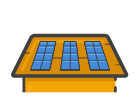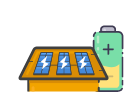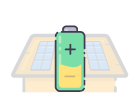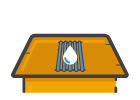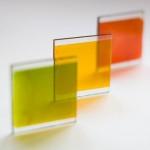New self-cleaning glass could be used in solar panels
A new type of glass that could be used for solar panels has been created by researchers in the US. The glass is self-cleaning and anti-fogging and also eliminates reflections.
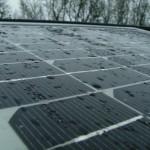 Massachusetts Institute of Technology (MIT) is well known all over the world for its technological innovation. The latest development from the well known US research institution involves an inexpensive manufacturing process that could be applied to all sorts of optical devices from the screens of smartphones and televisions to car windshields, windows and solar power.
Massachusetts Institute of Technology (MIT) is well known all over the world for its technological innovation. The latest development from the well known US research institution involves an inexpensive manufacturing process that could be applied to all sorts of optical devices from the screens of smartphones and televisions to car windshields, windows and solar power.
The surface of the glass consists of a pattern of nanoscale cones that are five times as tall as their base width (200 nanometers). It is based on a new fabrication approach that MIT have developed using coating and etching techniques which they adapted from the semiconductor industry.
The process begins by coating a glass surface with thin layers which include a photoresist layer. This is then illuminated with a grid pattern that is steadily etched away so that successive etchings form conical shapes. It is the shape of the nanotextured surface, rather than the technique involved, that delivers the unique characteristics of the new glass. In the future, the team believe glass or transparent polymer films might be manufactured in such a manner by passing them through a pair of textured rollers while still partially molten. This would not add much to the cost of manufacture but the advantages of the new technique are substantial. Touch-screen devices for example will be able to eliminate reflections, something that is already a standard feature of many solar panels, as well as resisting contamination by sweat.
At present solar PV panels can lose as much as 40 percent of their efficiency within six months due to dust and dirt accumulating on the surfaces. Over 50% efficiency can also be lost through reflection depending on time of day, although some solar panels have an anti-reflective coating to try and counter this.
The new glass also resists the formation of water droplets as well as having a virtual absence of glare meaning that much more light will be absorbed by solar panels rather than bouncing off the surface. The team stated that they were inspired by looking at various surfaces in nature, such as lotus leaves.
The team have been working on this project with the help of funding from the US Army Research Office through the MIT Institute for Soldier Nanotechnology. MIT have already applied for a patent on the process.
Find local, MSC certified Solar Installers
Start your quote
Find local, MSC certified Solar Installers






